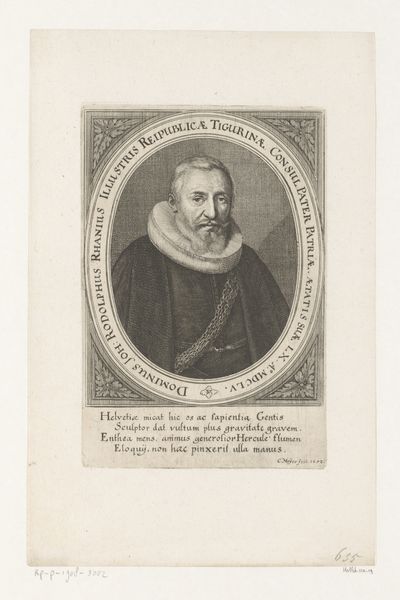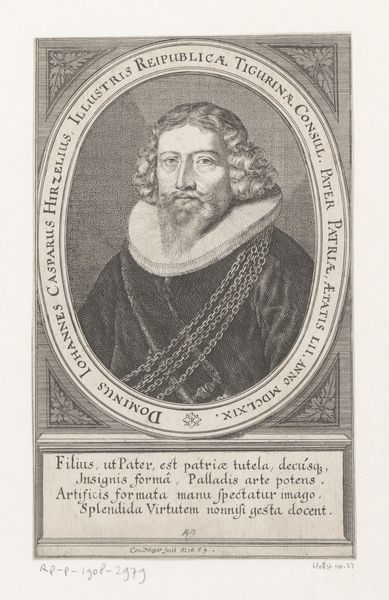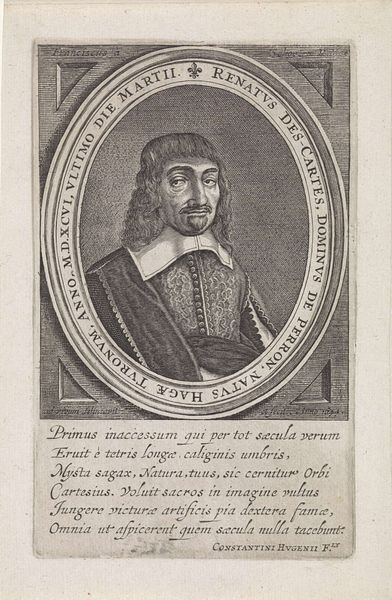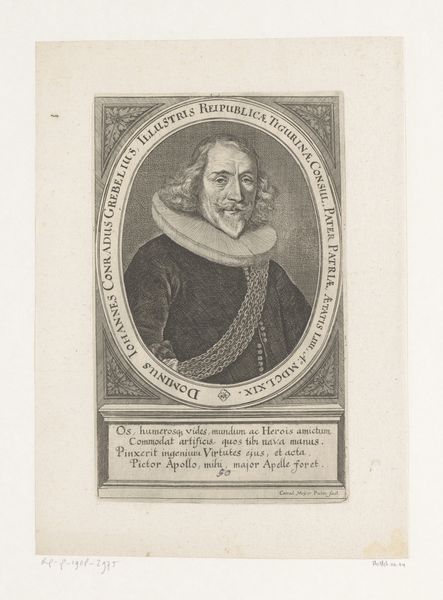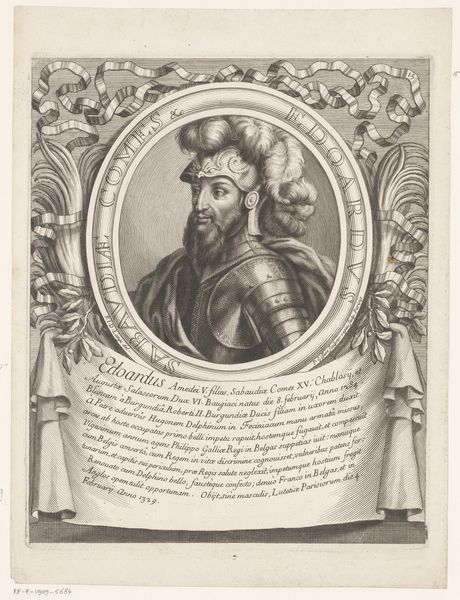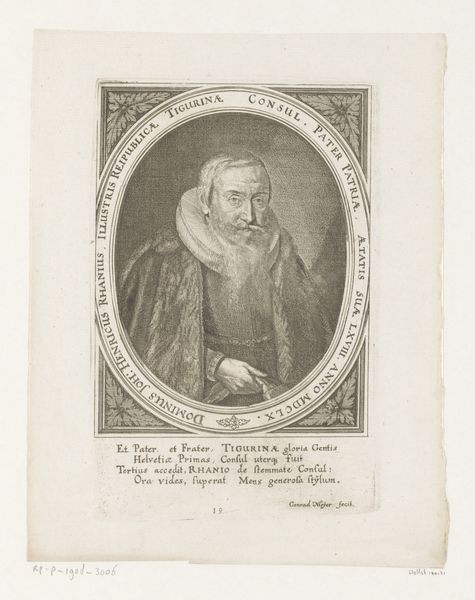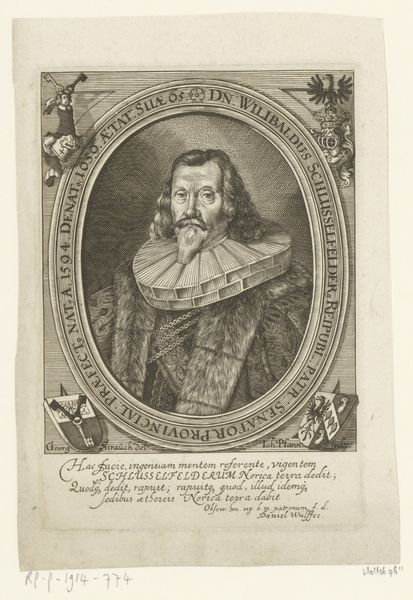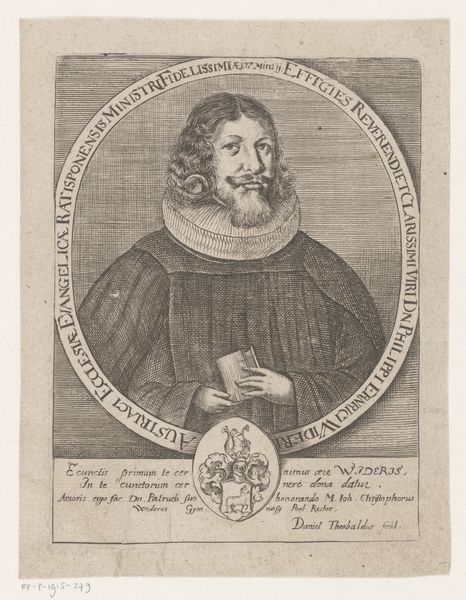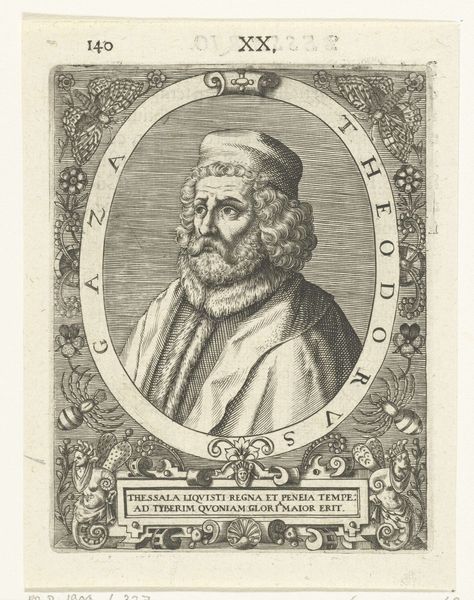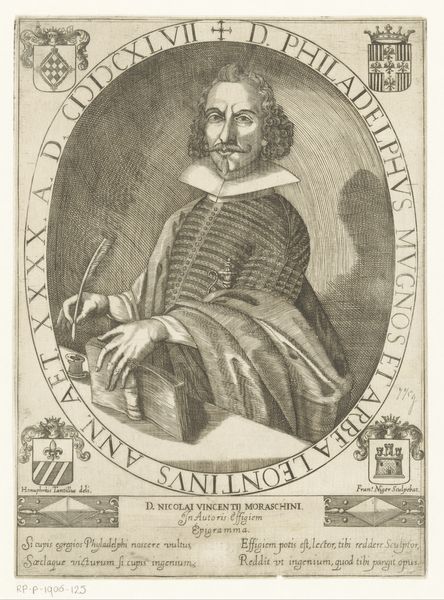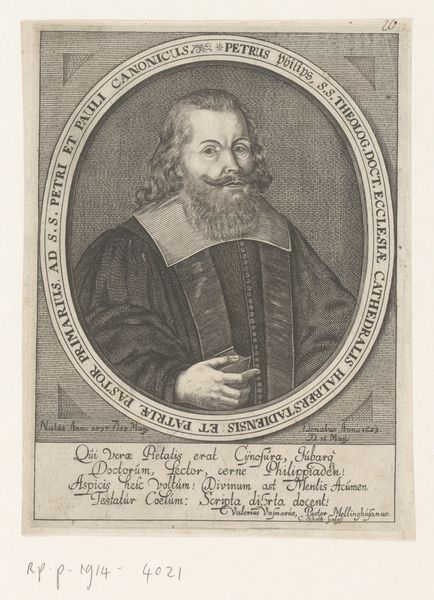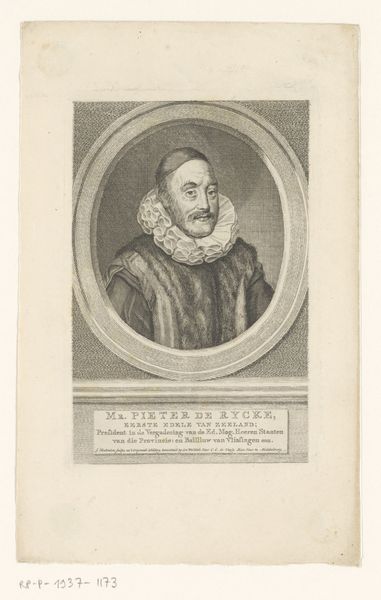
drawing, print, paper, engraving
#
portrait
#
drawing
#
baroque
# print
#
old engraving style
#
paper
#
history-painting
#
engraving
Dimensions: height 247 mm, width 152 mm
Copyright: Rijks Museum: Open Domain
Editor: Here we have Conrad Meyer’s “Portret van Hans Caspar Hirzel,” created in 1669. It's an engraving, a print on paper. The detail is remarkable; he looks like a powerful figure. What strikes you most about it? Curator: What jumps out at me is how this portrait performs a very specific kind of civic duty. Consider the inscription surrounding Hirzel. This wasn't just a likeness; it was a declaration, printed for distribution, announcing his status: "Consul, Father of the Fatherland." These printed portraits were instrumental in shaping public perception and reinforcing social hierarchies in the Dutch Golden Age. Do you think the average person looking at this print in 1669 would see just a portrait, or something more? Editor: I guess it's more than just a picture. It’s like…propaganda almost, projecting an image of stability and leadership? Curator: Precisely. And consider the role of the Rijksmuseum itself, centuries later, displaying this print. What does it mean for a national museum to preserve and showcase such an image? Editor: It feels like it solidifies Hirzel’s place in history, almost legitimizes that initial "propaganda." It definitely makes me think about the museum’s role in shaping national narratives. Curator: Exactly! It encourages us to analyze how museums themselves are active participants in the ongoing construction of historical and social meaning, one engraving at a time. Editor: That’s a great perspective. It makes you consider who gets remembered, and how. Curator: And who controls that memory. A powerful reminder, I think.
Comments
No comments
Be the first to comment and join the conversation on the ultimate creative platform.
